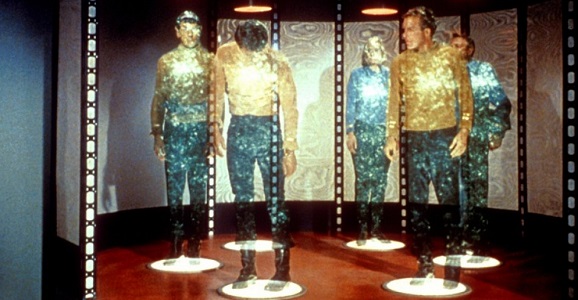Realistic Teleportation Time Calculated, And Nobody Got Time For That
This article is more than 2 years old
 If all you’ve been doing since childhood is waiting for a future where Star Trek transporters, or reasonable facsimiles of them, become a reality, you should probably get a book of crossword puzzles because it’s going to be a while before it happens. I mean, even if there was an actual “‘transporter” to use, it would still take way too long to move anything, as determined by a team of students from the University of Leicester, all of whom are in their final year of study to receive a Masters of Physics degree. Maybe you should get two crossword books.
If all you’ve been doing since childhood is waiting for a future where Star Trek transporters, or reasonable facsimiles of them, become a reality, you should probably get a book of crossword puzzles because it’s going to be a while before it happens. I mean, even if there was an actual “‘transporter” to use, it would still take way too long to move anything, as determined by a team of students from the University of Leicester, all of whom are in their final year of study to receive a Masters of Physics degree. Maybe you should get two crossword books.
Instead of looking at it from the Trek angle of just zapping people around the universe, Leicester team member David Starkey says, “We decided to investigate the practicalities of teleportation as a means of everyday travel.” And the results are pretty astounding. The team determined just how much information would need to be moved by figuring out how much data humans are made of, including everything we’ve got going in the brain region. The team figured the sum total amounted to “2.6 times 10 to the power of 42.” This a number that humans couldn’t possibly count to in a lifetime, and is almost impossible to grasp with our data-filled minds.
“We employed several approximations to determine the amount of data required in bits to fully store a human genetic code and neural information,” Starkey said, “and the signal to noise ratio of typical signalling equipment. Our results indicate the time scales to complete a full teleport of an individual are a little too lengthy at this time. Current means of travel remain more feasible.” You might not think that public transportation will get you where you need to go very quickly, but the transporter alternative will literally take forever.
Scaling to bandwidth power, the team decided the energy needed to tele-send a person into orbit would take up to 4.5 times 10 to the power of 15 years, assuming a bandwidth of 29.5 to 30 gigahertz. In case you’re like me and can’t do massive calculations on the fly, this means the process would take 350,000 times longer than the existence of our 14 billion-year-old universe. I get shivers up my spine whenever I try and understand a time frame like 14 billion years, so to consider something even more time-intensive is enough to give me an aneurysm. I seriously doubt those Chinese scientists were thinking on this large scale when they started transporting photons at a speedy rate.
If it’s all right with you guys, I’m perfectly happy to live in a world where
flying cars are the next big step in travel. I just don’t have time for all the beaming up and down.
Check out the below experiment to see how to build your own teleportation device. Cue the spooky music.












